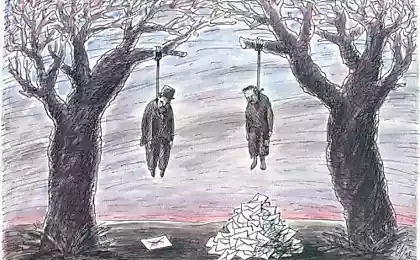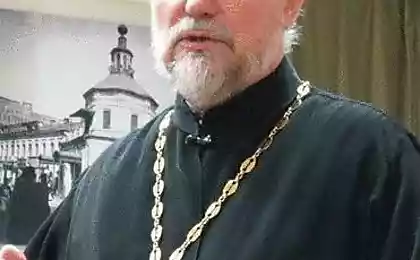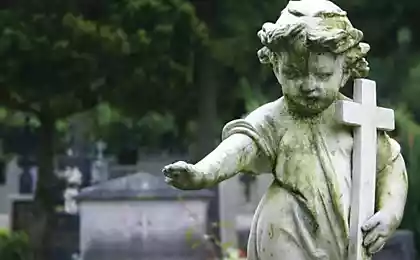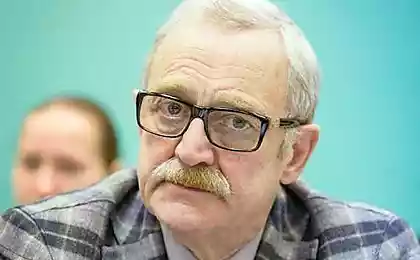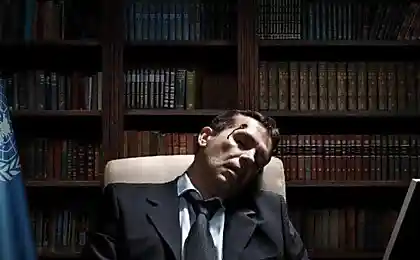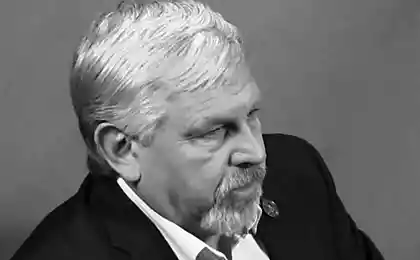650
25 facts about suicide. Suicide is a sin
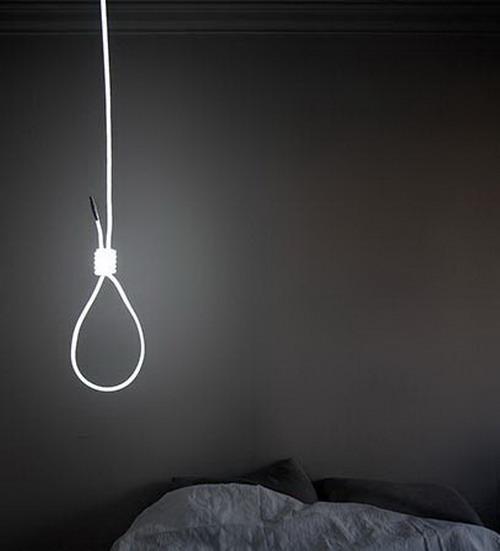
People reduce their own lives in many different ways, for example by swallowing poisonous spiders by drilling a hole in the head, gasping in his underwear, peanut butter sticking to the veins, breaking the neck in a vice, and diving into the vats of beer to drown.
***
In China, suicide occurs on average every two minutes. China accounts for almost a quarter of the global total of suicides: between 250 000 and 300 000 cases per year.
Some celebrities have committed suicide: Sigmund Freud, Cleopatra, Mark Antony, Brutus, Judas Iscariot, Hannibal, Nero, Virginia Woolf, Adolf Hitler, Ernest Hemingway, Vincent van Gogh, Jack London, Judy Garland, Pontius Pilate, Socrates, and, perhaps Tchaikovsky, Elvis Presley, Kurt Cobain and Marilyn Monroe.
***
Suicide is more likely than murder. For every two murders there are three cases of suicide.
***
In the spring of suicide rates by 4-6% higher than in the rest of the year. Some studies argue that in the villages of suicide occur more frequently than in urban areas.
***
The French writer Albert Camus, perhaps best described the suicide in his statement: "What is the cause of life, it can also be a great cause for death».
***
In ancient times, people often commit group suicide to avoid being captured by the enemy. For example, in 473 BC. e., 960 Jews committed suicide for fear of being enslaved by the Romans. Only two women and five children escaped this death.
***
From 5 to 10% of suicides occur in psychiatric hospitals.
***
November 18, 1978 the leader of the American sect of "Peoples Temple" ordered his followers to drink cyanide dissolved in juice. Thus suicide 913 people, including about 300 children. The leader, Jim Jones, died after shooting himself in the head.
***
While there is a widespread belief that most young people commit suicide, is actually the most common suicide - elderly.
***
In Mayan culture hanging considered justifiable method of suicide, and those who have committed suicide so were guaranteed a place in the afterlife. They even had a goddess of the loop and the gallows called Ixtab («Rope Woman»).
***
Four out of five people who committed suicide, attempted suicide at least once previously.
***
Although women have attempted suicide three times more often than men, successful men commit suicide three times more often than women.
***
Researchers involved in the problem of suicide, actively criticized the TV crews reporting of suicides in the news because they believe that it encourages potential suicides to a decisive step.
***
In medieval Europe, suicide is often equated to the murder, and even possessed by the devil. There are three common methods of punishment for this act of confiscation of property, a mockery of a corpse and the abandonment of burial in the cemetery.
***
Neurotransmitter serotonin is a kind of a transmitter of signals between neurons in the brain responsible for mood, eating habits, sexual behavior, sleep and energy exchange. The researchers found that people with low serotonin levels 10 times more likely to commit suicide than people with a normal level.
***
In ancient Greece, the Stoics and the Epicureans among there was no consensus about suicide. Cato, Pliny and Seneca considered acceptable act of suicide, based on personal choice. On the other hand, Pythagoras, Plato, Aristotle, Virgil, Ovid and Cicero were against suicide.
***
There are national preference in the selection of methods of suicide. For example, the Russians prefer to hang himself, the British and Irish poisoned poison the Italians shoot, the Americans also prefer guns, poison and, in addition, suffocation with carbon monoxide.
***
In families where one of the family members committed suicide, suicide probability of other family members increases.
***
A suicide note left for about 25% of suicides.
***
In the Renaissance, when the church began to lose its power, suicide has become fashionable. Almost all the characters of Shakespeare's tragedies commit suicide: Hamlet, Othello, Lear, Romeo, Juliet, Brutus, Antony and Cleopatra. The essayist of the 16th century, Michel de Montaigne argues that the right to die - it is a personal choice, and Sir Thomas More in his novel "Utopia" justify suicide as a form of euthanasia.
***
In 1982 he published a book titled "Suicide." It is both a political manifesto claiming the right of everyone to the death of their own accord, and the direct supervision of committing suicide. It contains information about the medicines prescription, which provide a "soft and painless death", as well as the calculated lethal doses.
***
The first mention of suicide found in the Egyptian literary work written by four thousand years ago. In his poetry, the unknown author describes the pain of its existence, and death benefits.
***
Sergei Yesenin, who is believed to have committed suicide, wrote a poem - a suicide note in his own blood.
***
September 10 is World Day against suicide.
